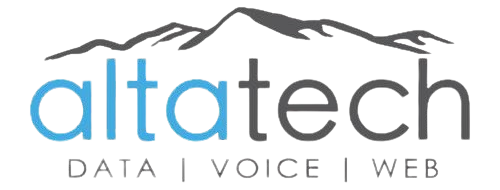Data protection is now a key part of any business it keeps sensitive information safe from the dangers of new technology and connections.
A futuristic control room filled with advanced technology, large screens displaying cybersecurity graphs and data protection metrics, technicians collaborating around a central console, digital maps of network security, glowing holographic interfaces, an atmosphere of teamwork and vigilance, sleek and modern design elements representing comprehensive IT management.
Full-service managed IT plans lead this change they offer a strong defense that fits well with daily business activities these plans do more than just react to threats they include risk assessment, constant monitoring and quick response.
By using these IT security services businesses become more reliable and confident in their technology this reassures everyone that they are serious about protecting data and managing IT well.
The Growing Importance of Cybersecurity in Business
Business and cybersecurity are more connected than ever as companies grow online new cyber threats emerge this section explores current cyber threats the effects of data breaches and how proactive IT solutions help protect against these risks.
Trends in Cyber Threats Targeting Businesses
Business cybersecurity is always changing threats are getting smarter and businesses are facing more attacks. Phishing, ransomware and APTs are just a few threats that show the need for strong cybersecurity.
Financial and Reputational Risks of Data Breaches
Data breaches can hurt a company finances and reputation the IBM Cost of a Data Breach Report shows that the costs can be huge this highlights the importance of protecting sensitive information before a breach happens.
The Role of Proactive IT Management in Risk Reduction
Proactive IT solutions are key to fighting cyber threats following guidelines like the NIST framework helps. By doing regular security checks and having plans for when things go wrong businesses can protect themselves and their customers.
A modern office environment with diverse professionals collaborating around high-tech devices, incorporating digital security elements like firewalls and encryption symbols, futuristic data analytics screens displaying upward trends, a backdrop of city skyscrapers symbolizing business growth, and subtle hints of cybersecurity through padlocks and shields integrated into the design.
Understand the Full-Service Managed IT Plans
Full-service managed IT plans help businesses run smoothly they offer complete IT support, letting companies focus on what they do best with these plans, you get 24/7 monitoring, helpdesk support and proactive IT management.
A sleek and modern office environment bustling with professionals engaging with advanced technology, multiple computer screens displaying cybersecurity graphics and analytics, server racks in the background, dynamic visuals of data protection with a lock symbol, vibrant color palette emphasizing security and innovation, futuristic feel.
These plans cover all IT needs from updates to security. Managed IT service providers customize services for each business they handle cloud migration, data backup and cybersecurity keeping your systems healthy.
Outsourcing IT to experts frees up your team time. Studies show companies using managed IT services have less downtime and more reliable systems this shows the benefits of a structured IT management plan.
The main aim of these plans is to keep your IT stable and secure they solve current problems and prevent future ones this proactive approach is key to keeping up with the fast-changing.
Comparing Traditional IT Support with Managed Services
The IT support has changed a lot with the rise of managed services this change shows the old ways of IT support had limits. Managed services now help make IT services more affordable and flexible for businesses.
More companies see the benefits of managed services over traditional IT support they find it offers a strategic edge.
Reactive vs. Proactive IT Approaches
Old IT support waits for problems to happen and then fixes them this can cause a lot of downtime and lost work time on the other hand managed services watch systems closely to stop problems before they start.
This proactive approach keeps businesses running smoothly.
Cost Implications of In-House vs. Managed IT Services
Managed services have more stable costs than traditional IT support. In-house IT needs a lot of money upfront for equipment and staff there are ongoing costs for upkeep.
Managed services use their size and knowledge to offer a clear cost plan this helps businesses budget their IT expenses better.
Scalability and Flexibility in Service Provision
Managed services are great for growing businesses they offer flexibility and scalability that traditional IT can’t match this makes it easy for businesses to grow or adjust without big costs.
This is especially good for companies with changing needs or growing fast.
Full-service Managed IT Plans in Cybersecurity Enhancement
Keeping your business safe from cyber threats is key. Full-service managed IT plans play a big role in this they offer top-notch IT risk management to protect against cyber attacks with managed security services companies can use the latest tech to fight off threats.
These services do more than just fix problems they watch over your systems to find and fix weak spots before they become big issues this helps keep your business safe from cyber attacks.
Managed IT service providers use a detailed approach to improve cybersecurity they keep systems up to date and manage networks closely. This helps prevent data breaches which can hurt your business a lot.
These services also help you understand your cybersecurity better they give you detailed reports and analytics this lets you improve your defenses and meet strict IT standards.
Studies from top groups like the Ponemon Institute show managed IT works well they say it helps businesses avoid security problems and recover faster from attacks in short for a strong digital defense a full-service managed IT plan is essential.

